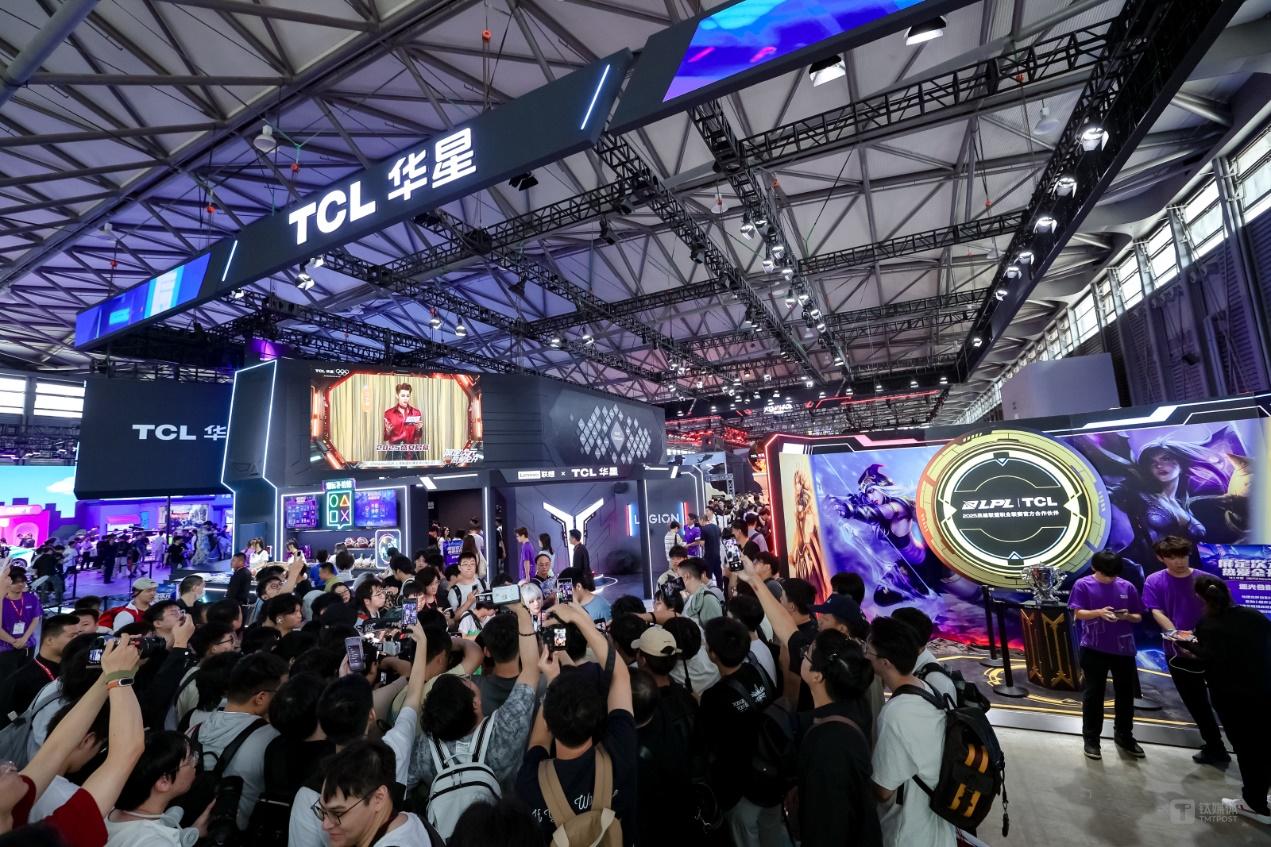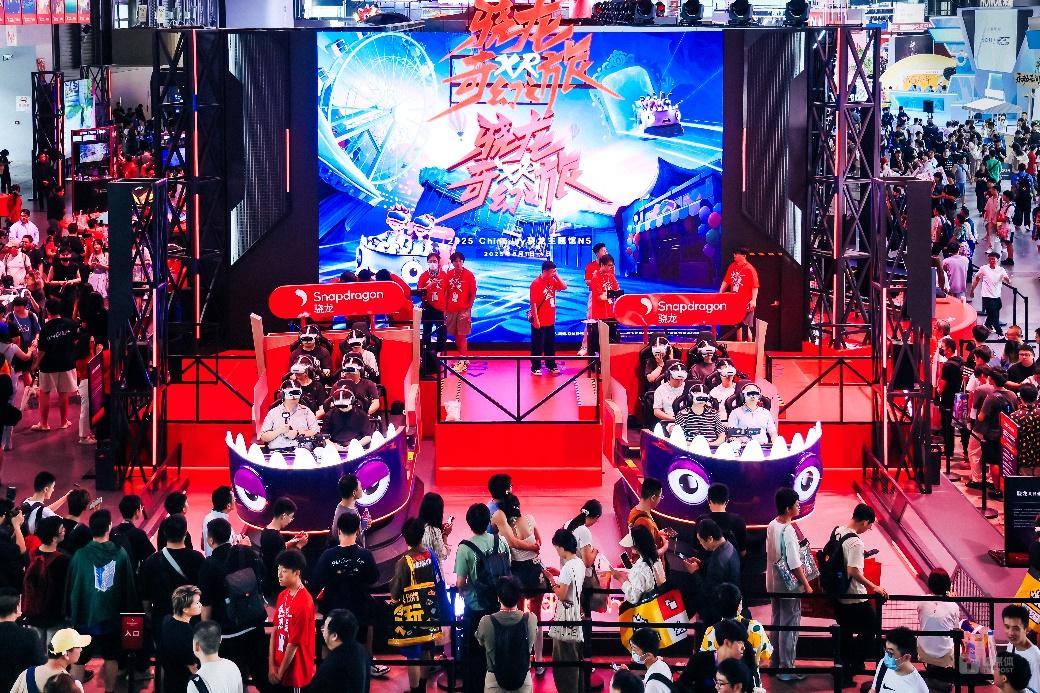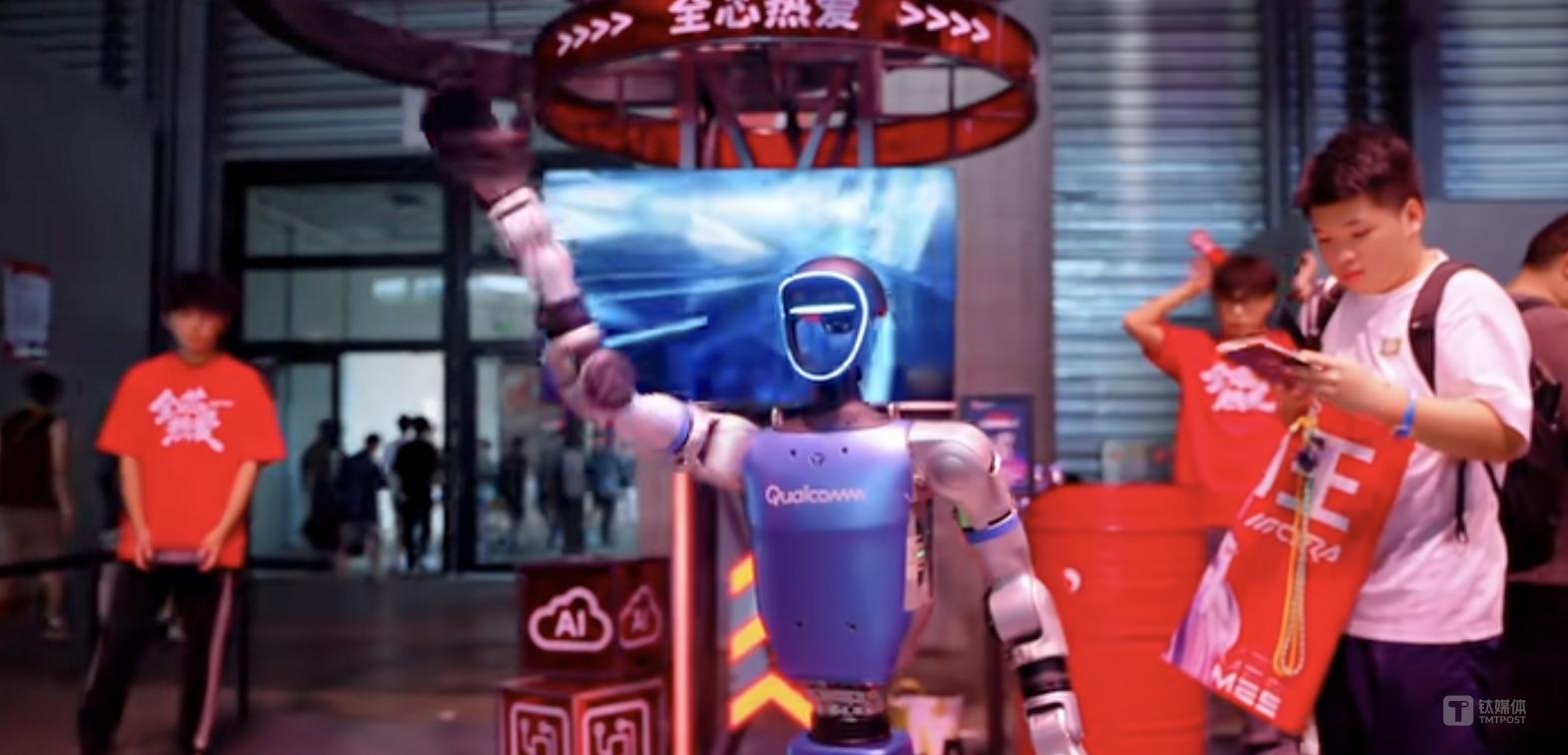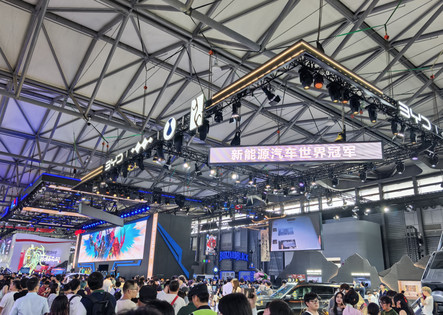
TMTPOST -- Shanghai’s annual ChinaJoy expo, once known primarily as a gamer and anime fan pilgrimage, is rapidly evolving into a platform where China’s top tech companies flex their latest innovations—from Snapdragon-powered AI PCs to humanoid robots and automotive crossovers.
Now in its 21st year, the China Digital Entertainment Expo & Conference (ChinaJoy) opened its doors this week with over 743 exhibitors and an expected daily footfall exceeding 55,000. For many attendees, however, the first impression wasn’t of cutting-edge gadgets but of the overwhelming crowds.
“The lines at this event are just insane. You don’t really understand queuing until you get here,” one attendee wrote on social media, capturing the expo’s unique blend of enthusiasm and chaos.
While blockbuster game releases and anime IP remain crowd-pullers, the expo floor has become a battleground for device makers, chip giants, and upstream suppliers seeking to capture a piece of China"s booming esports and digital entertainment economy.

China’s esports industry posted revenue of 12.76 billion yuan ($1.76 billion) in the first half of 2025, a 6.1% year-on-year increase. This growth is fuelling demand across the hardware ecosystem, from high-refresh-rate gaming monitors to performance-tuned smartphones and XR devices. According to IDC, gaming monitors now account for 62% of China’s online display market, with shipments expected to rise 12.4% this year, outpacing the broader PC monitor market.

At Hall N5, Qualcomm’s Snapdragon Pavilion has become a focal point for tech enthusiasts, featuring over 100 devices from 75 partners, spanning smartphones, PCs, and XR wearables. Flagship gaming phones from Xiaomi, Meizu, Honor, and others, all powered by Snapdragon 8 Gen 3 chips, are on display alongside AI PCs and MR headsets.
“Snapdragon 8 Gen 3 now supports 184 product designs, making it the platform of choice for the most powerful Android gaming devices on the market,” said Alex Katouzian, head of Qualcomm’s Mobile, Compute & XR division.
XR is also surging. PICO’s upgraded “Snapdragon XR Fantasy Journey” demo showcases the visual fidelity possible with Snapdragon’s XR2 Gen 2 platform. AR glasses, meanwhile, are gaining traction beyond niche enthusiasts. Xiaomi’s AI Glasses, which integrate real-time translation and voice assistant functions, have exceeded internal sales projections, signaling a new frontier for wearable tech.

As mobile esports professionalize, smartphone performance is becoming a decisive factor shaping player experience and ecosystem stickiness. “Gaming has become an ultimate stress test for chips, driving deep collaboration across the entire supply chain,” said Hou Mengjuan, Global VP at Qualcomm. “The Snapdragon Pavilion is a signal to partners that delivering superior user experience requires joint innovation.”
Brands are leveraging collaborations with popular game IPs to market limited-edition devices and accessories. “These aren"t mass-market products,” a marketing manager at a smartphone booth explained. “They"re collector’s items designed to excite fan communities and drive brand engagement.”
Huawei and OPPO, which opted for independent booths, are taking divergent strategies—Huawei focusing on HarmonyOS ecosystem integration, and OPPO targeting Gen Z audiences with a crossover collaboration featuring anime hit “Haikyuu!!”.

Humanoid robots added to the spectacle this year, with Unitree Robotics’ G1Q performing interactive demos. A dedicated Smart Entertainment Robot Zone featured soccer matches between visitors and AI-powered bots from companies like UBTECH and Zhiyuan Technology.
Auto giants are also muscling into the expo. BYD, for instance, showcased a Black Myth: Wukong-themed car, a move netizens cheekily dubbed a “second-dimension auto show.” Xiaomi’s presence extended beyond phones and wearables to its EV business, underscoring how tech firms are increasingly bundling entertainment and mobility.

While regulatory constraints have tempered ChinaJoy’s media spotlight compared to its heyday, the event’s significance as a cross-industry collaboration platform is growing. The convergence of gaming, AI, XR, and automotive is driving a new wave of consumer innovation. What was once a niche convention for ACGN (Anime, Comics, Games, Novels) culture is now an arena where China’s broader tech ecosystem battles for consumer mindshare.
“Gamers don’t think in terms of specs anymore,” said a Xiaomi product manager. “They want seamless experiences across devices—from mobile to wearables to in-car entertainment. That’s where the real competition is now.”
As ChinaJoy wraps up its four-day run, one thing is clear: this is no longer just a gamer’s paradise. It’s a full-blown digital lifestyle showcase—and a microcosm of how China’s tech giants are redefining the future of interactive entertainment.







